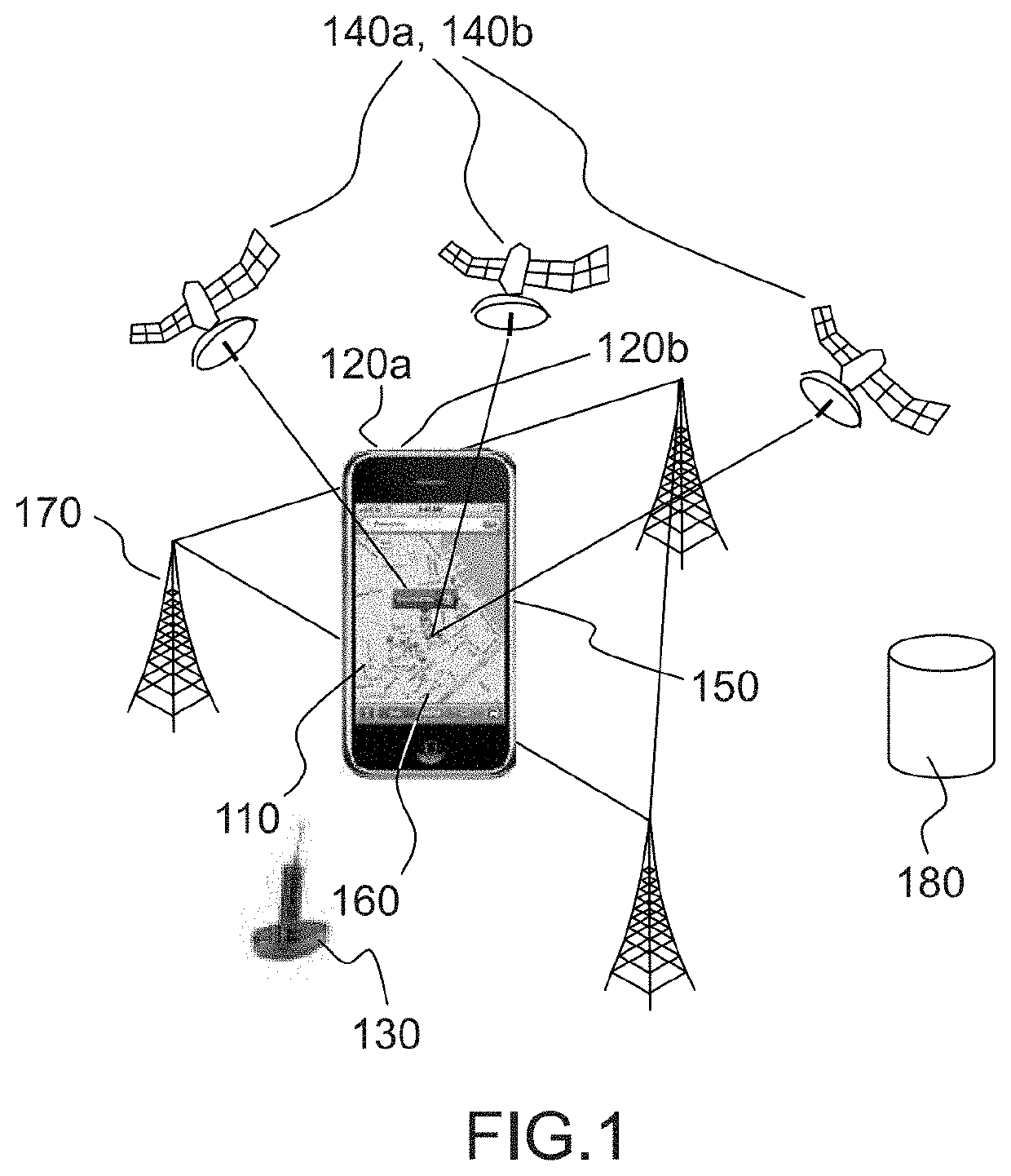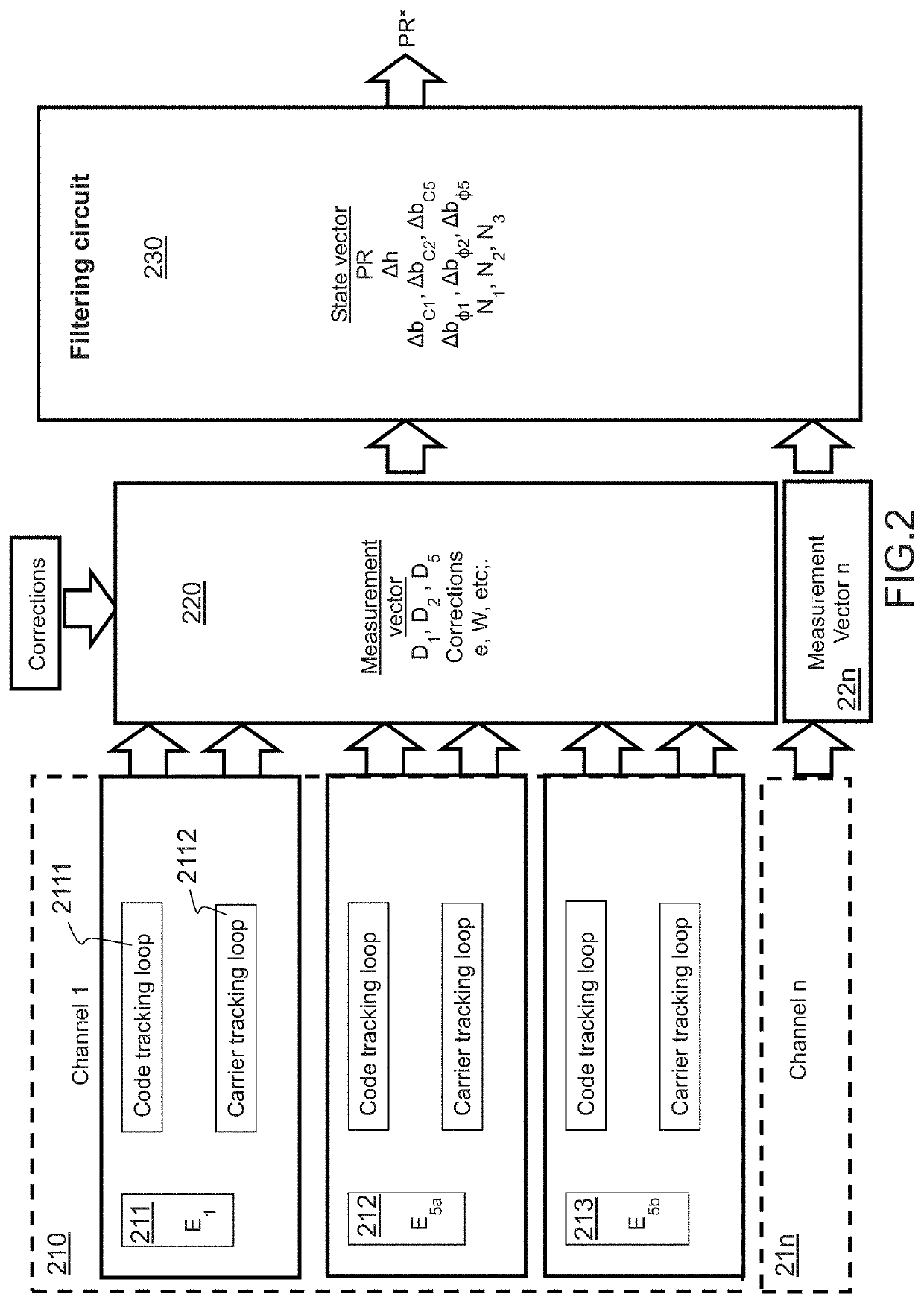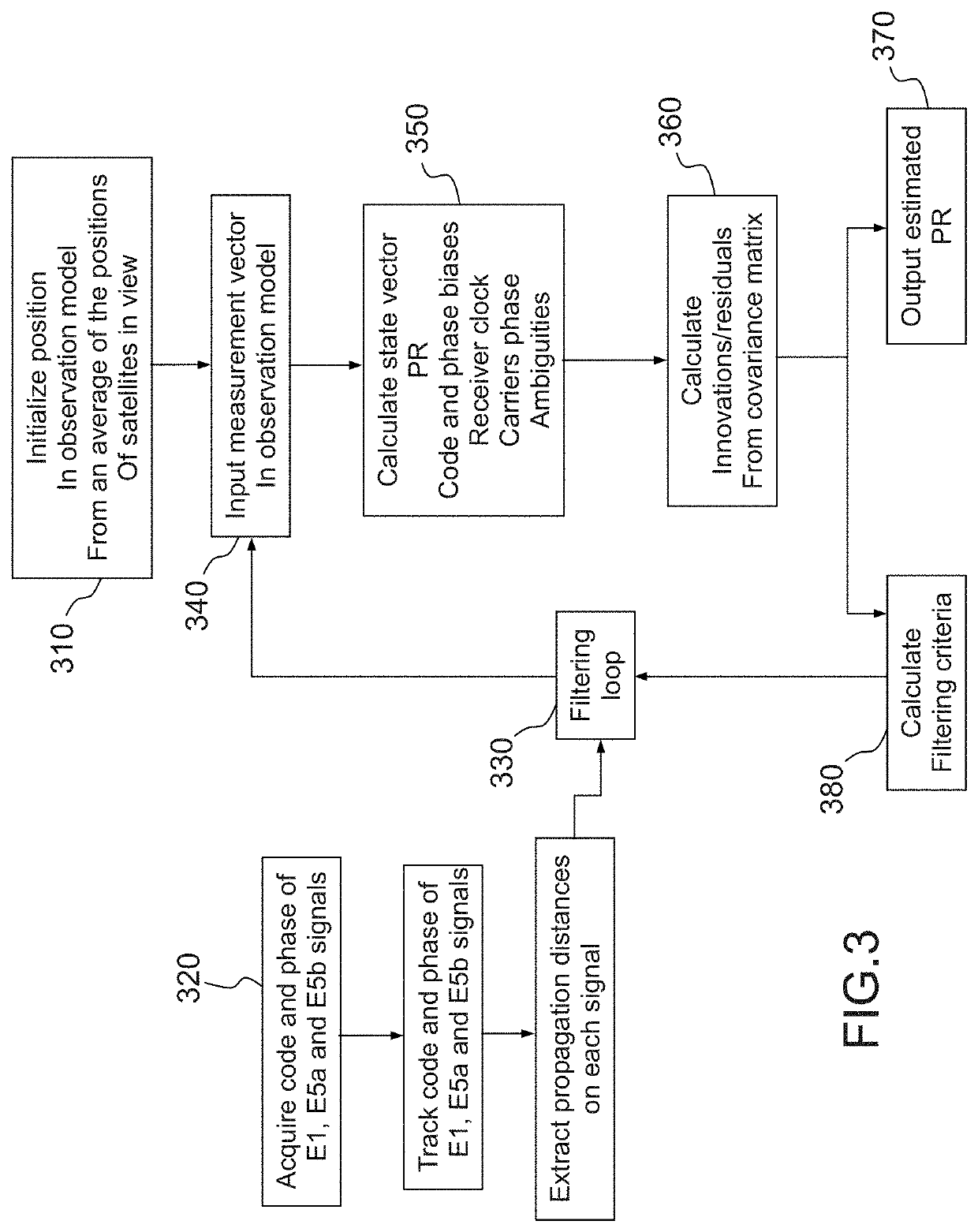GNSS receiver with a capability to resolve ambiguities using an uncombined formulation
a receiver and uncombined formulation technology, applied in the field of satellite navigation, can solve the problems of significant increase in affecting the number the inability to determine the number of cycles of carrier signals at the time of measurement, so as to reduce the complexity of triple frequency signals, and solve ambiguities.
- Summary
- Abstract
- Description
- Claims
- Application Information
AI Technical Summary
Benefits of technology
Problems solved by technology
Method used
Image
Examples
Embodiment Construction
[0044]FIG. 1 represents a system which enables the implementation of the invention in a number of its embodiments.
[0045]There are number of types of GNSS receivers which may be more or less compact. Only by way of example of the field of application of the invention, FIG. 1 depicts a terminal which is a smart phone 110 with functionalities for acquiring signals from at least a constellation of navigation satellites 140. The terminal should have a specific antenna, 120a, for acquiring the signal(s) of the satellites. It is also possible to also have an add-on external antenna 130 which improves the conditions of acquisition and tracking of the navigation signal. The in-built and add-on antennas can be adapted to mono, bi or triple frequency bands. The location of the add-on antenna may be chosen to improve the conditions of reception, notably on an automotive vehicle, a boat or a plane. It can be housed in a radome to limit the impact of multipath reflections. In such a configuration...
PUM
 Login to View More
Login to View More Abstract
Description
Claims
Application Information
 Login to View More
Login to View More - R&D
- Intellectual Property
- Life Sciences
- Materials
- Tech Scout
- Unparalleled Data Quality
- Higher Quality Content
- 60% Fewer Hallucinations
Browse by: Latest US Patents, China's latest patents, Technical Efficacy Thesaurus, Application Domain, Technology Topic, Popular Technical Reports.
© 2025 PatSnap. All rights reserved.Legal|Privacy policy|Modern Slavery Act Transparency Statement|Sitemap|About US| Contact US: help@patsnap.com



